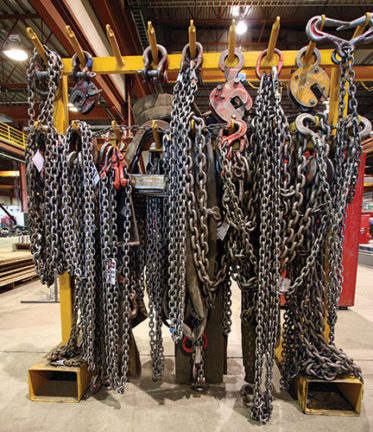Safe use and storage of chains

When using chains and chain slings on the job, you need to keep a few important things in mind. According to the National Safety Council “Supervisors’ Safety Manual,” chains should never be overloaded. Common causes of chain failure include metal fatigue, bending or deforming the chain links, and fragility due to defects in the metal.
To prevent chain failure, it is important to regularly check chains or chain sling links. NSC also recommends purchasing chain slings complete from the manufacturer and returning them to the manufacturer for repairs. Additionally, NSC cautions against inserting a bolt or nail between two broken links in an attempt to hold them together.
Before attempting to lift a load with a chain or chain sling, check the chain thoroughly to ensure no knots or kinks are present. When lifting, do so slowly and gradually. Never try to hammer a link over the hook, NSC states, as this can stretch both the links and hook. When bringing a load down, apply the brakes incrementally to ensure a smooth stop.
NSC recommends that chains should be tagged with their:
- Load capacity
- Date of last inspection
- Type of material
Store chains in a dry place away from vehicle traffic – chains should never be left where they can be run over by trucks or other equipment. Store them on racks where air can circulate around the chains to keep them dry. Refrain from lifting heavy chains manually, NSC states. Instead, use machinery.

